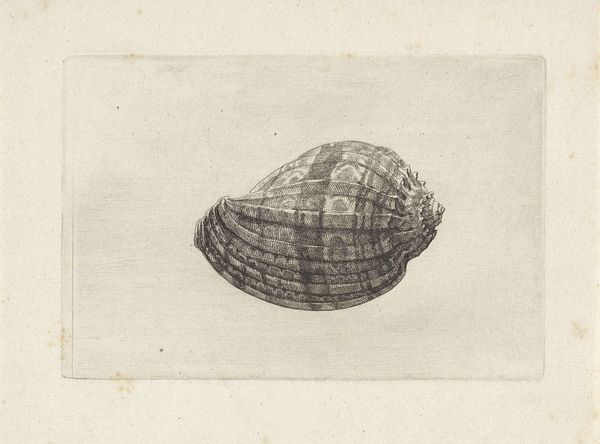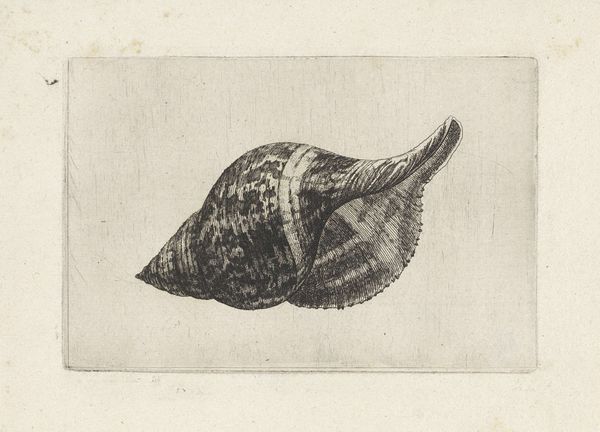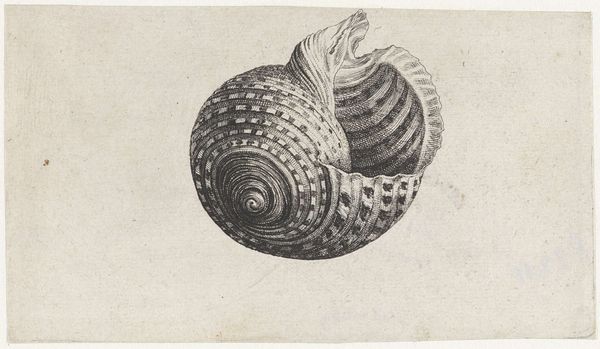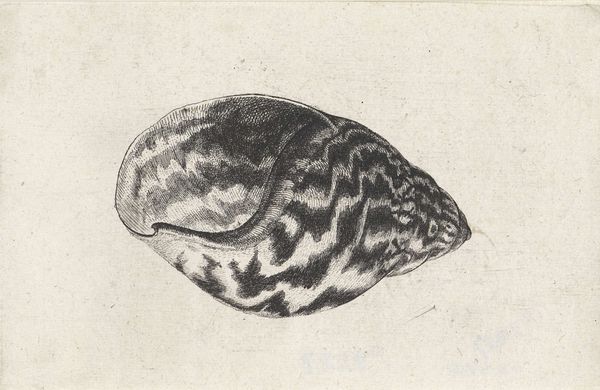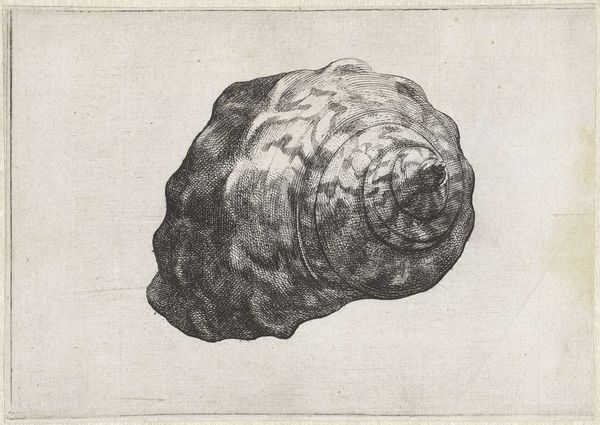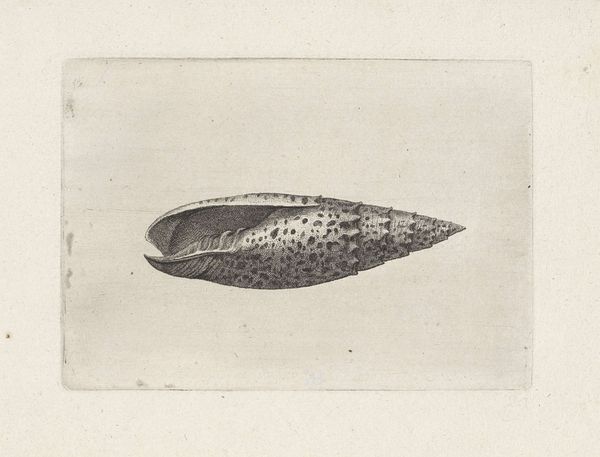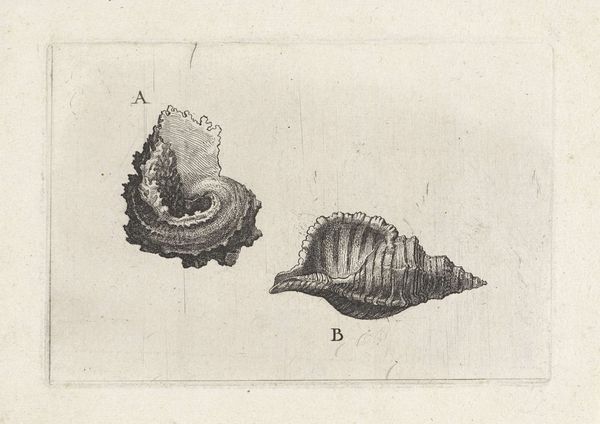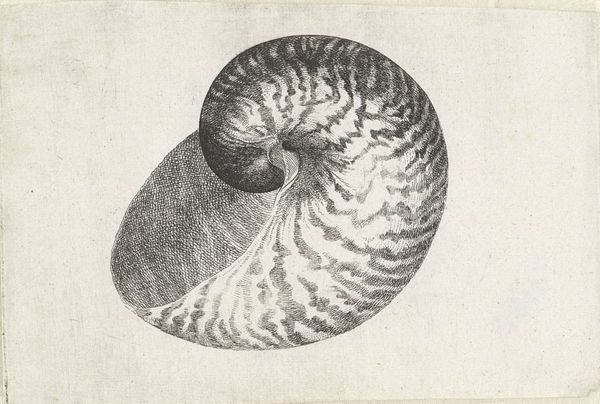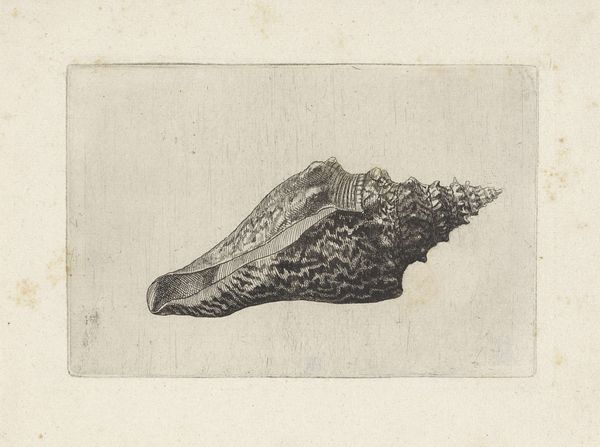
print, engraving
#
baroque
# print
#
form
#
pencil drawing
#
line
#
engraving
Dimensions: height 95 mm, width 145 mm
Copyright: Rijks Museum: Open Domain
Wenceslaus Hollar made this print of a shell, tonna perdix, using etching—a process that involves biting lines into a metal plate with acid. This technique, emerging in the 16th century, allowed for incredibly fine detail, as you can see here. Consider the linear textures that define the shell’s surface. These were achieved by carefully drawing through a wax coating, then submerging the plate in acid, a potentially hazardous process. The depth of the lines and the resulting tones are carefully controlled by timing the acid bath. In Hollar's era, images like these weren't just art; they were scientific documents. The intense labor required to produce such an image, using materials and processes that required considerable skill, underscored the value placed on observation and knowledge accumulation at the time. This kind of printmaking played a vital role in circulating information and shaping the collective understanding of the natural world. It shows how closely art and science were intertwined, both supported by skilled labor and material expertise.
Comments
No comments
Be the first to comment and join the conversation on the ultimate creative platform.
